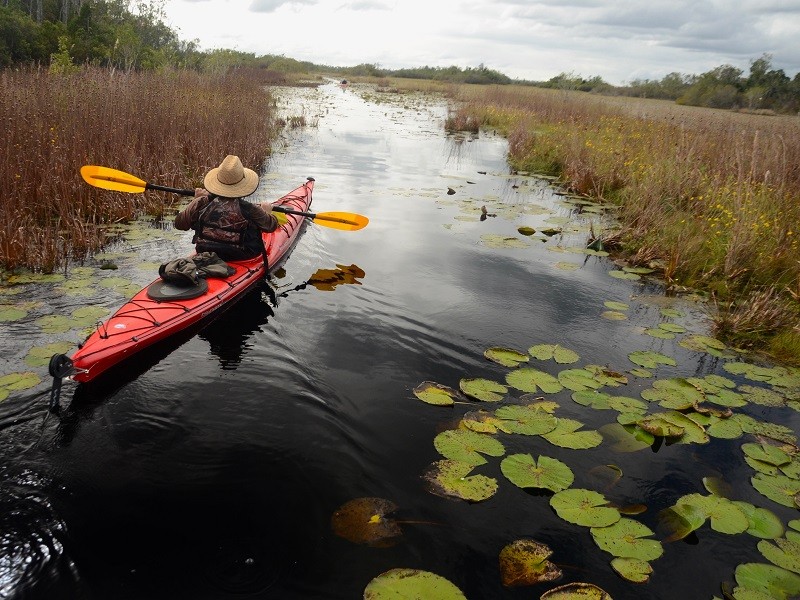American Rivers named Georgia’s Okefenokee Swamp among the country's most endangered waterways Tuesday due to a proposed mining project that would leave fish, wildlife, wetlands, water quality and local culture at risk, according to river officials.
“The Georgia Environmental Protection Division is examining the proposal, has taken it though public review and has received more than 100,000 letters of concern from people, which is certainly a record,” Executive Director Rena Ann Peck with Georgia River Network said.
According to official state documents, the proposed mining project was first submitted in 2018 by an Alabama-based company called Twin Pines Minerals, LLC. The application announced the company’s plan to strip titanium and zirconium from land near the Okefenokee National Wildlife Refuge during a 30-year period.
“First, they proposed to dig 12,000 acres and then they lowered it down to a little over 500 trying to avoid the federal permitting processes,” Peck said.
A project expected to affect U.S. waterways would typically require a federal permit; however, the U.S. Clean Water Act was altered in 2020 under President Donald Trump and would no longer fully protect the country’s streams and wetlands with projects under 600 acres.
In a reaction to those changes, Twin Pines lessened its mining project to a ‘pilot mine’ that would no longer require federal approval to break ground; However, regardless of the project’s size, the mine would be located on an elevated terrace called Trail Ridge nearly three miles from the Okefenokee Swamp. Trail Ridge forms the eastern boundary of the swamp and acts as a hydrogeological dam to maintain its water levels, Peck said.
“There are other places and other ridges in Georgia and along the eastern seaboard where they can mine,” she said. “I’m not against mining. I’m just against mining that would harm the swamp on Trail Ridge, which is expected to happen.”
Twin Pines Minerals was reached out to for comment; however, the company refused a unique interview and forwarded a statement from its president, Steve Ingle. Ingle stated his company is not worried about its project and claimed concerns were nothing other than ‘a publicity stunt and a last-ditch attempt to influence the EPD by opponents.’
“The facts and science are on our side and show that our project poses no risk to the Okefenokee Swamp,” Ingle said. “We look forward to developing this unique resource to benefit the local, state and national economy without harming the swamp or the surrounding environment,” he said.
Twin Pines Minerals published a video on its website to further explain its proposed project and provide a visual depiction for viewers. According to the video, the project would not affect the swamp’s water levels nor would it affect the surrounding timber-filled property around its proposed location.
Fish and Wildlife Service Regional Director Mike Oetker with the U.S. Department of Interior addressed the Georgia EPD in a letter with concerns that did not support claims made by Twin Pines Minerals. Oetker stated that mining the swamp would cause lower water levels and extended drought periods that could pose fire risk to the swamp’s surrounding timberland, Peck said.
“Drought makes the Okefenokee more flammable than ever, and those fires would escape the swamp onto the tree farms surrounding the Okefenokee and would be devastating to the timber industry,” Peck said. “So, to protect the tree farmers to their private property, to protect the public’s right to visiting the Okefenokee National Wildlife Refuge, this mine should not be permitted.”
According to the U.S. Fish and Wildlife Service, the Okefenokee National Wildlife Refuge is home to more than 600 plant species and provides habitats for threatened and endangered wildlife.
The Okefenokee Swamp is also considered the largest national wildlife refuge and attracts more than 600,000 visitors a year who bring in nearly $50 million of tourism revenue, according to Peck. Tourism has also supported an estimated 826 jobs and $17.5 million in annual employment income, she said.
“The economy around the [Trail Ridge] area depends on tourism of the swamp, so we don’t want to mess with the economic engine that’s also keeping these communities thriving,” Peck said.
American Rivers, who included the Okefenokee Swamp on its ‘most endangered’ list has requested the EPD to deny permits for the proposed mining project.
American Rivers 10 most endangered rivers list for 2023 is as followed:
1. Colorado River, Grand Canyon (Arizona)
2. Ohio River (Pennsylvania, Ohio, West Virginia, Kentucky, Indiana, Illinois)
3. Pearl River (Louisiana, Mississippi)
4. Snake River (Idaho, Oregon, Washington)
5. Clark Fork River (Montana)
6. Eel River (California)
7. Lehigh River (Pennsylvania)
8. Chilkat and Klehini rivers (Alaska)
9. Rio Gallinas (New Mexico)
10. Okefenokee Swamp (Georgia, Florida)

http://accesswdun.com/article/2023/4/1180005/okfenokee-swamp-one-of-americas-most-endangered-waterways
